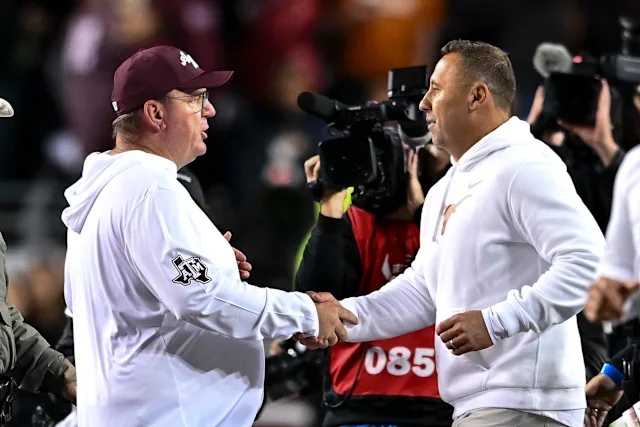In a stunning shakeup of the college football recruiting landscape, the Georgia Bulldogs—long regarded as the powerhouse of SEC recruiting—have officially been dethroned from their No. 1 position in the SEC football recruiting rankings. The news reverberates across the conference and the nation, signaling a shift in power dynamics as other contenders surge forward with bold commitments, daring flips, and high-stakes NIL maneuvering that threaten to upend Georgia’s recent reign of dominance on the recruiting trail.
For the past several years, the Georgia Bulldogs have built an empire in Athens, assembling class after class of elite talent under the direction of head coach Kirby Smart. Known for his relentless pursuit of five-star prospects and his masterful ability to develop players into NFL-ready stars, Smart had seemingly crafted an impenetrable recruiting machine. However, the 2025 recruiting cycle has taken an unexpected turn. Georgia’s grip on the top spot has loosened—overtaken by a surge from rival SEC programs that are equally hungry for supremacy.
The fall from the top isn’t merely a numerical reshuffling—it represents a dramatic shift in momentum. Programs like Alabama, Texas A&M, and even LSU have closed the gap and, in some cases, sprinted past Georgia in the rankings. Powered by deep NIL collectives, dynamic coaching staffs, and a willingness to adapt to the ever-evolving college football landscape, these programs are capitalizing on Georgia’s slight recruiting lull. It’s not that the Bulldogs are underperforming; it’s that the competition is simply rising to meet and, in some cases, exceed their standard.
The ripple effect began earlier this summer when a string of key targets who were once leaning heavily toward Georgia decided to chart different courses. Whether it was a last-minute official visit to Baton Rouge or an aggressive NIL pitch from College Station, Georgia began to see top-tier prospects slip through its fingers. A five-star linebacker from Florida stunned the Dawgs by committing to Alabama after a weekend trip to Tuscaloosa, while a highly coveted offensive tackle flipped to Tennessee—a school that has ramped up its recruiting efforts with noticeable results.
Compounding the situation, Georgia has faced more intense scrutiny over its retention strategy. With the NCAA transfer portal more active than ever and NIL opportunities flowing freely, keeping committed recruits engaged has become a new battleground. Some insiders suggest that the Bulldogs’ once ironclad relationships with recruits have been tested by external influences—namely agents, handlers, and rival coaches exploiting every possible angle to pry prospects away. The result is a recruiting cycle that feels less stable, more chaotic, and intensely competitive.
Meanwhile, Alabama has reloaded with ruthless efficiency. Nick Saban, despite swirling rumors of eventual retirement, has led a blistering charge back into the elite recruiting tier, flipping blue-chip talent and securing high-profile commitments at key positions. His staff has recalibrated its message, focusing on legacy, NFL production, and a renewed sense of urgency. It’s clear that the Crimson Tide isn’t content to simply keep pace—they intend to surpass.
Texas A&M, too, has emerged as a juggernaut in this cycle. Armed with one of the deepest NIL war chests in the country, Jimbo Fisher’s Aggies have stormed the recruiting trail with bold offers and big-time visits. Their strategy has worked—especially in Texas, Louisiana, and Florida—where they’ve pulled talent that Georgia once seemed destined to land. Their message is clear: Texas A&M is building a contender, and they’re doing it with a sense of swagger that’s hard to ignore.
Even LSU and Florida have made strong moves. LSU’s staff has hit the trail with renewed energy, landing key commitments at quarterback, wide receiver, and defensive back. Florida, once considered out of the top-tier mix, has made significant progress under its current leadership, reminding the rest of the SEC that the Gators aren’t done fighting for the conference’s top spot. The talent-rich state of Florida remains one of the most competitive recruiting territories, and Georgia’s once-dominant pull there is being challenged from multiple directions.
For Georgia fans, the news comes as both a surprise and a call to attention. The Bulldogs have not lost their luster—they still boast a roster loaded with former five-stars, a coaching staff with national championship rings, and a proven development pipeline to the NFL. But perception matters in recruiting, and the perception right now is that Georgia has been outpaced—if only temporarily. The program’s recruiting infrastructure is still strong, but in this era of college football, standing still is falling behind.
Kirby Smart remains confident. Speaking recently at a press availability, Smart downplayed the rankings shuffle while reaffirming his belief in the long game. “We don’t chase stars, we chase greatness,” Smart said. “We’re building a team, not a graphic. And we’ll finish stronger than we started. That’s the Georgia way.” Still, his words, while measured and defiant, cannot fully erase the reality that the Bulldogs must recalibrate to fend off their increasingly aggressive rivals.
Georgia’s path forward will rely on several factors. First, they must shore up the remainder of the 2025 class with impactful commitments. There’s still time—and a number of undecided top prospects are expected to announce decisions in the fall. Georgia has been known to surge late in cycles before, closing with flips and surprises that dramatically shift the final rankings. That kind of magic may be needed again.
Second, the Bulldogs must reassert their presence in key regions. Whether it’s rekindling pipelines in South Florida, reigniting dominance in Metro Atlanta, or pushing harder in Texas, Georgia’s recruiting staff will need to double down on its territory battles. Recruiting isn’t won on signing day—it’s won year-round through relationships, evaluation, and consistent messaging. Reestablishing those foundational elements will be critical.
Lastly, Georgia must continue evolving in the NIL space. While they’ve made strides, other programs have been more aggressive—particularly with upfront offers, brand partnerships, and social media monetization. The NIL landscape is a living, breathing battlefield, and programs that adapt faster often come out ahead. Georgia has the fan base, the alumni support, and the brand strength to compete with anyone—they just have to mobilize it with maximum efficiency.
This recruiting cycle’s shake-up doesn’t mean Georgia is in trouble. In fact, it may be exactly the wake-up call needed to reignite their recruiting machine. Programs that have reached the mountaintop know that staying there is harder than the climb. With rivals nipping at their heels and the landscape shifting beneath their feet, Georgia must once again embrace the underdog mentality that built their dynasty in the first place.
It’s not about losing one ranking—it’s about how the Bulldogs respond. Will they fight back and reclaim their perch atop the SEC? Or will this be the beginning of a new recruiting hierarchy, one that sees Alabama, Texas A&M, and others taking center stage? The answer won’t come overnight. But one thing is certain—the battle for the future of SEC football is more intense than ever, and Georgia’s fall from No. 1 has made the fight that much more compelling.
As the 2025 recruiting cycle barrels toward its climax, every commitment, every visit, and every flip will be watched with heightened scrutiny. The balance of power in the SEC hangs in the balance. And while Georgia may no longer hold the top spot, the war for recruiting dominance has only just begun.



